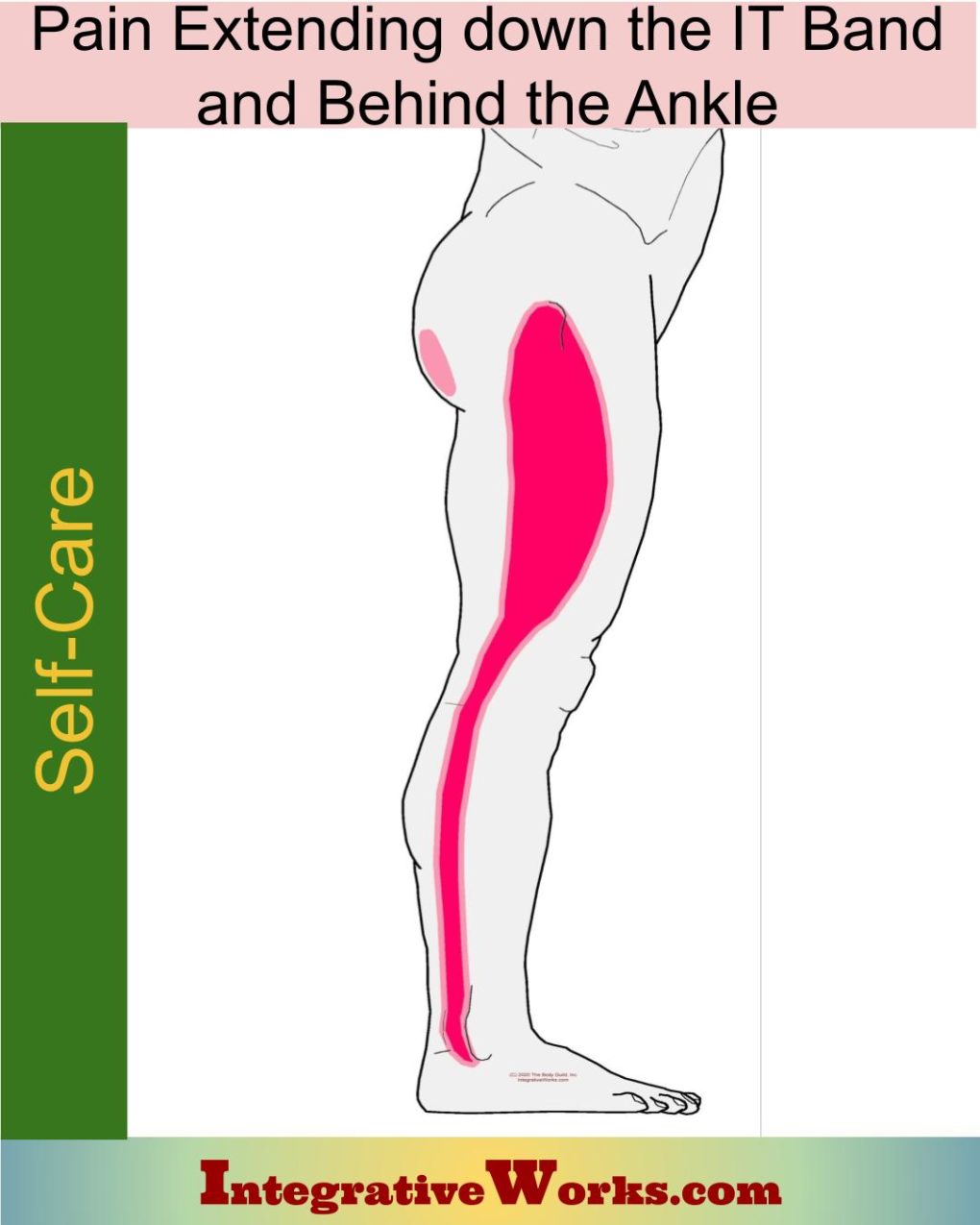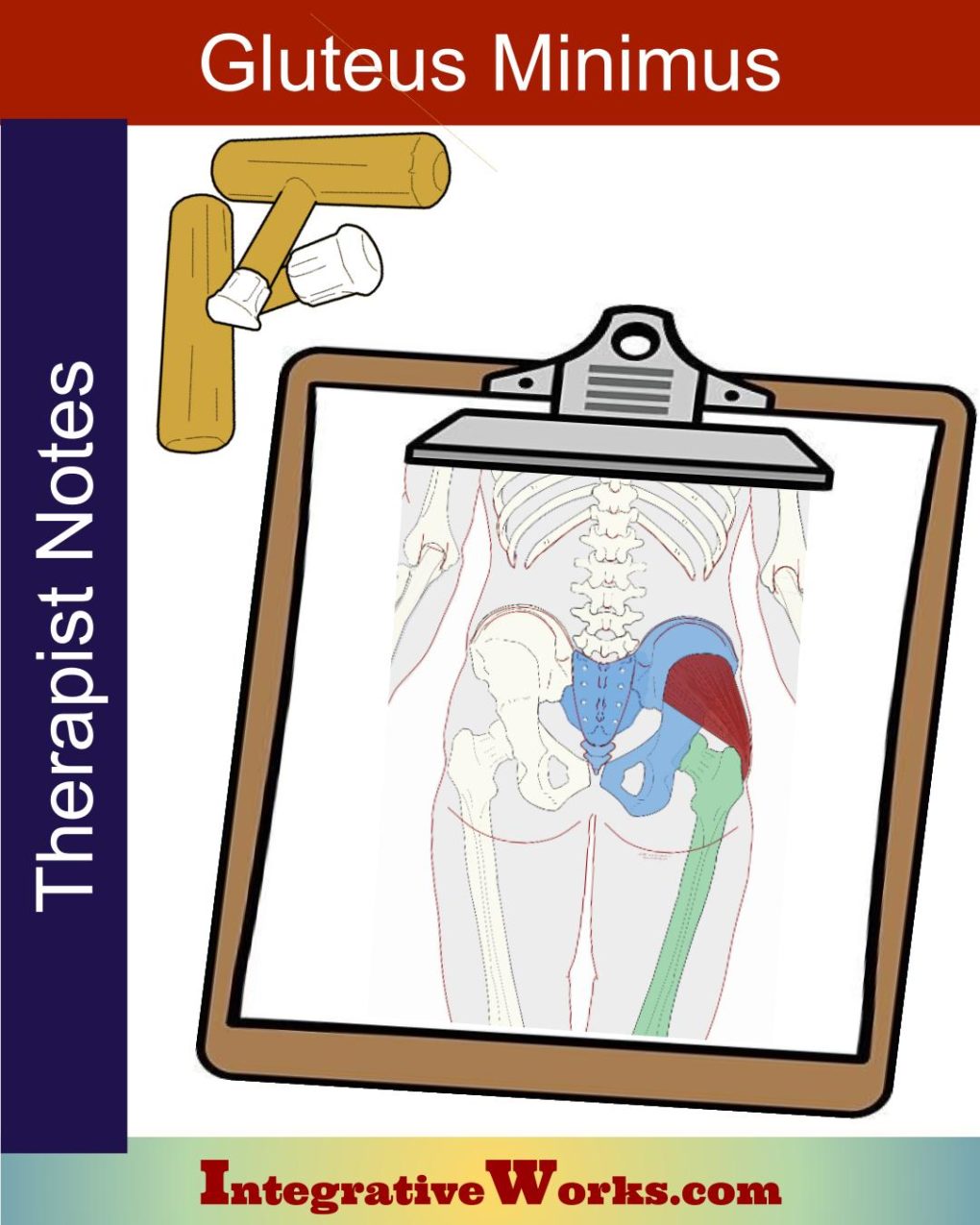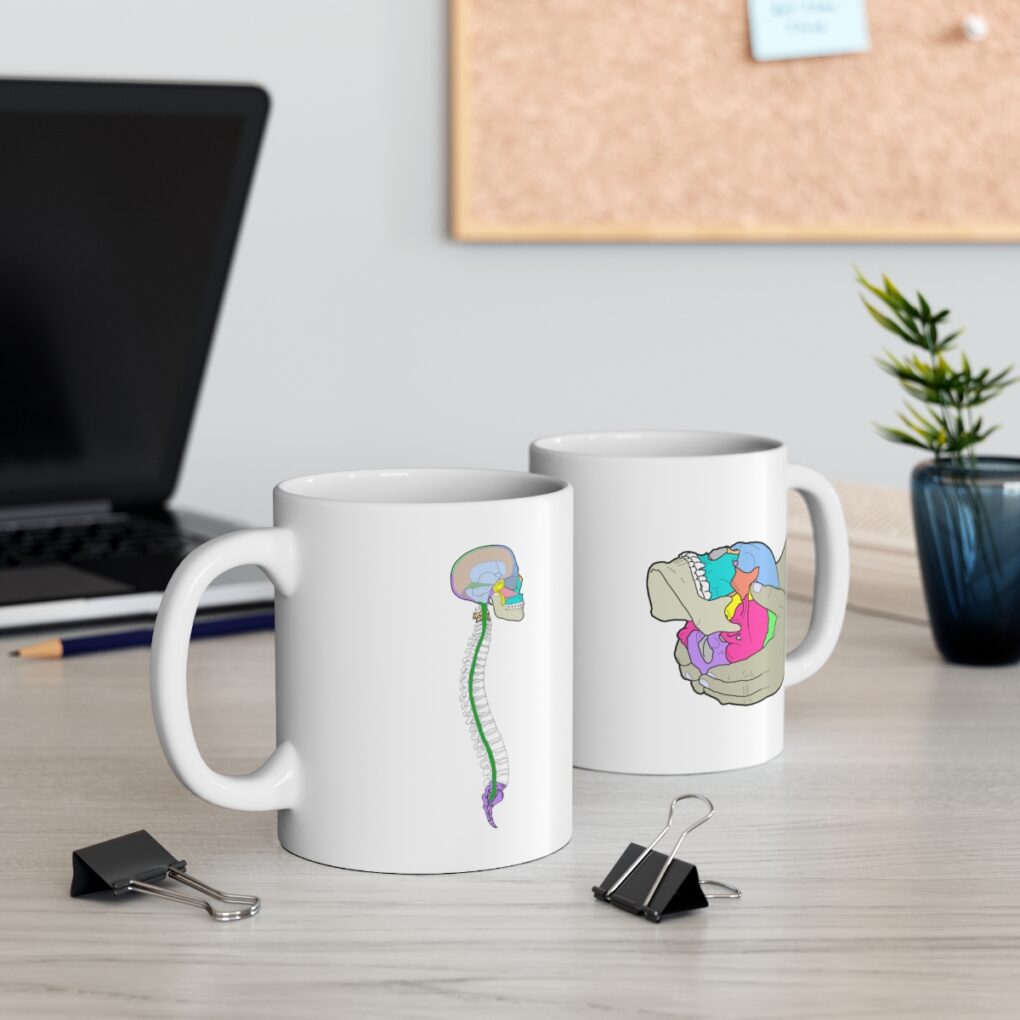Table of Contents
- How People Describe This Pain Pattern
- How You Activate and Intensify This Pain Pattern
- Self-Care – Getting Relief on Your Own
- Musculoskeletal Anatomy Behind Your Pain
- Therapy Notes for Massage and Bodywork
Want to skip ahead?
Here’s a link to my post about
getting relief on your own.

Aching Along the Side of the Leg
The people complain of pain down the side of the leg. Most frequently, they focus on the thigh. When questioned, they will often say that it extends down the calf. Understanding where the pain goes is essential. People with this gluteus minimus problem are clear that it goes behind the ankle. Comparatively, other patterns extend toward the front of the ankle and onto the foot.
When it Focuses on the Buttock
When there is pain in the lower buttock, it can be the primary complaint. In those cases, pain down the thigh is a lesser concern or may not even be a problem.
This stiffness and chronic pain may flare up when rising from a chair. It may also disturb their sleep or cause them to walk with a limp.
How You Activate and Intensify This Pain Pattern

Sitting Still
People with this trigger point, especially when it focuses on the buttock, are aggravated by prolonged sitting or standing. Typically, they also have some pain along the side of the leg.
One of my clients says he is always the first to stand during the applause at a play because of the pain. Frequently, these people get a standing desk and swap back and forth between them as the day goes on. Long periods of driving, where they cannot shift to a better position or sleeping on their side, can activate the pain so that it cannot be relieved without becoming mobile.
Onset is OftenVague
This problem usually progresses over time, and they are unaware of a specific onset. They may have had something like a jarring motor vehicle accident or stepped in a hole just before noticing that it bothered them to be immobilized for long periods.
Clinically Proven
Self-Care Strategies
Self-Care Posts have common sections to make them easy to follow and understand:
- Activities to Avoid or Change
- Strategies for Quick Relief
- Stretches and Exercise for Longer-Lasting Relief
- Yoga Corner
Better Bodywork
Through Shared Expertise
Therapy Notes provide details for cranial, spinal, and local joint work. These notes also link to a traditional neuromuscular protocol.
By treating integrative components first, direct work on the muscle becomes less intense while providing longer-lasting relief.
Support Integrative Works to
stay independent
and produce great content.
You can subscribe to our community on Patreon. You will get links to free content and access to exclusive content not seen on this site. In addition, we will be posting anatomy illustrations, treatment notes, and sections from our manuals not found on this site. Thank you so much for being so supportive.
Cranio Cradle Cup
This mug has classic, colorful illustrations of the craniosacral system and vault hold #3. It makes a great gift and conversation piece.
Tony Preston has a practice in Atlanta, Georgia, where he sees clients. He has written materials and instructed classes since the mid-90s. This includes anatomy, trigger points, cranial, and neuromuscular.
Question? Comment? Typo?
integrativeworks@gmail.com
Follow us on Instagram

*This site is undergoing significant changes. We are reformatting and expanding the posts to make them easier to read. The result will also be more accessible and include more patterns with better self-care. Meanwhile, there may be formatting, content presentation, and readability inconsistencies. Until we get older posts updated, please excuse our mess.



